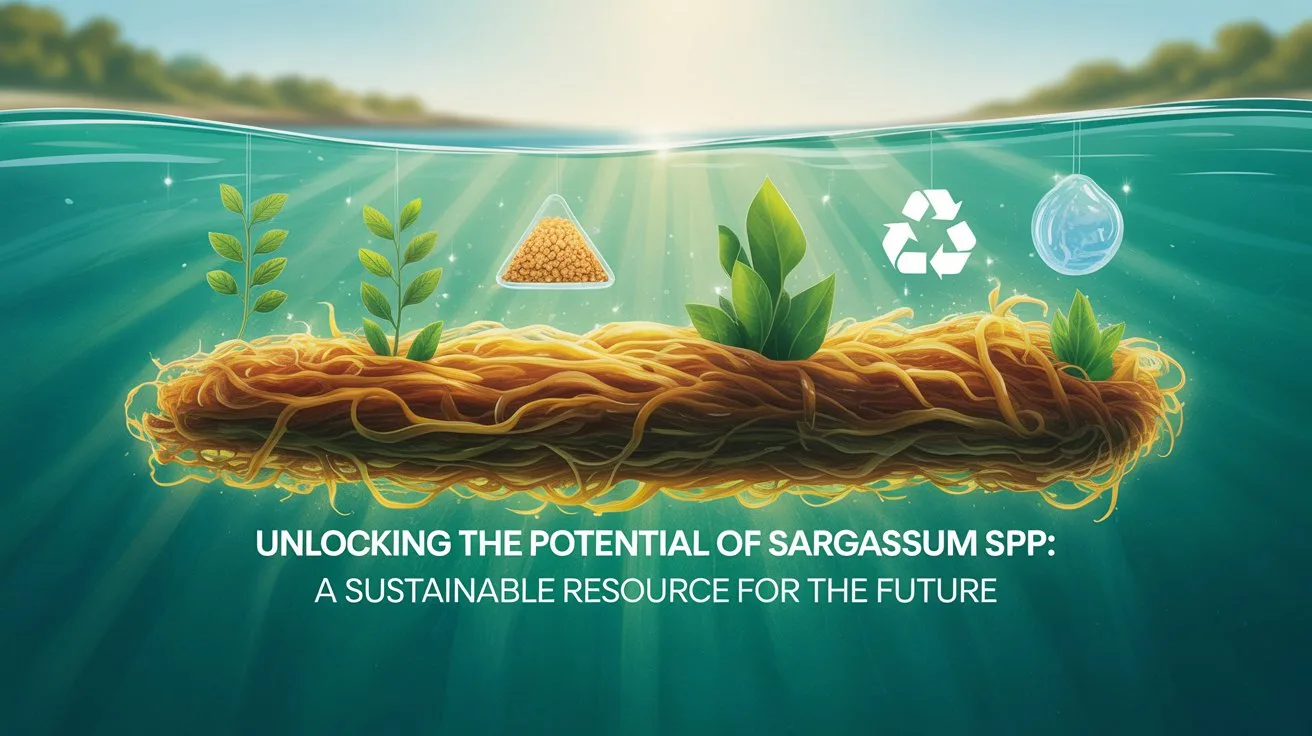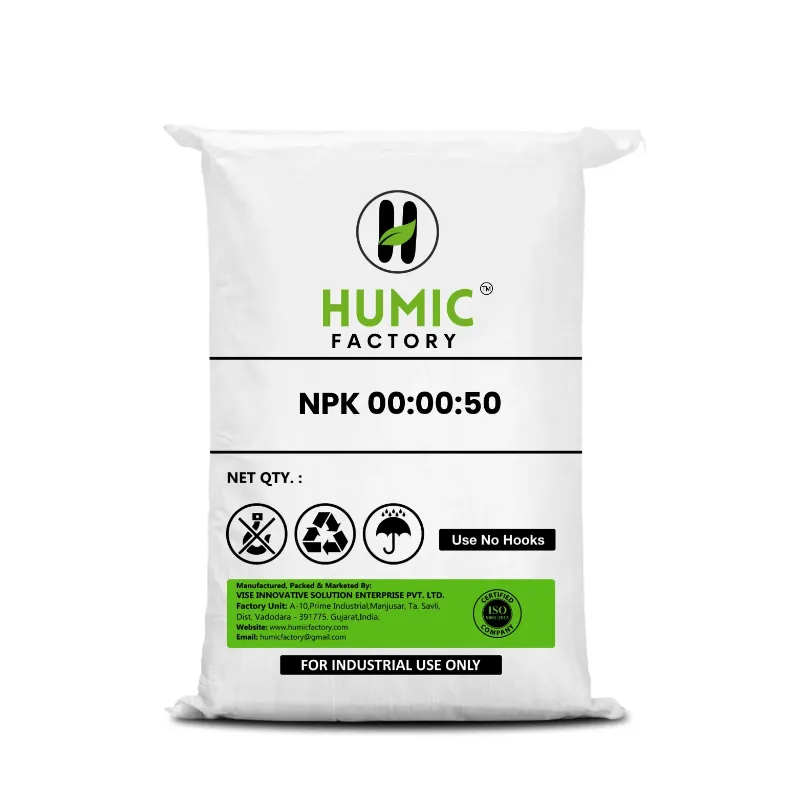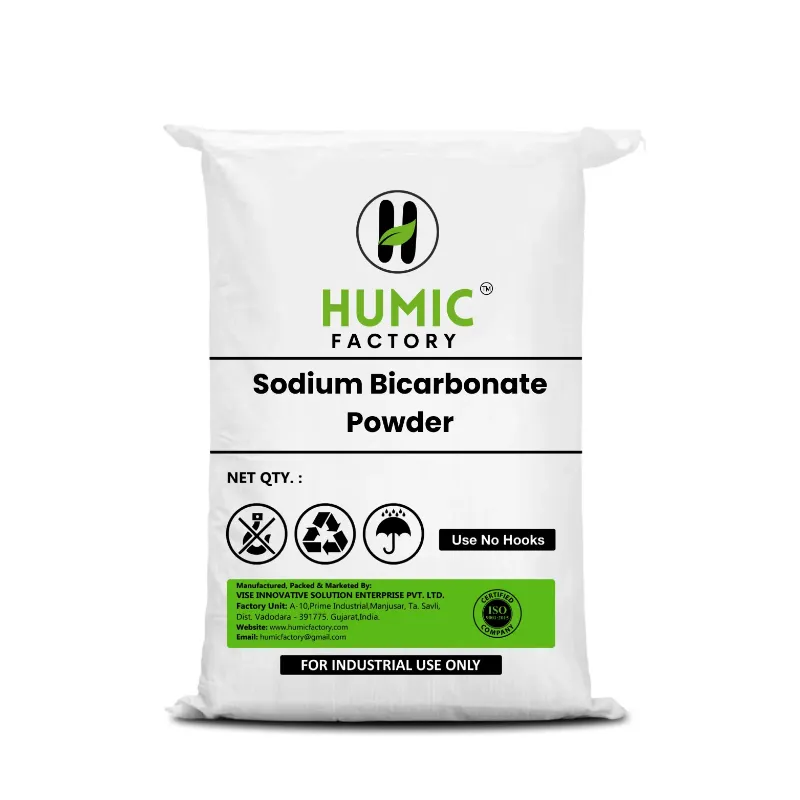Sargassum spp, a type of brown seaweed, is starting to be viewed as a sustainable source that has numerous possibilities. The marine vegetation not only contributes to the existence of marine ecosystems, but it could have possibilities in the agriculture, biotechnology, and energy production industries.
Sargassum is a genus of larger brown seaweed that grows in coastal and tropical latitudes. However, Sargassum is often known for its floating mats. Sargassum has long floats that help it to drift on ocean currents. Sargassum is a valuable resource, when it thrives in various conditions (i.e., coastal, offshore, hot or cold), it can be reasonably considered a natural resource that could contribute to environmental sustainability initiatives.
Sargassum spp. is increasingly being used in agriculture. The many nutrients in Sargassum make it a beneficial natural fertilizer. The extract of Sargassum is being used to treat soil, promote growth, and increase yield. Using Sargassum as fertilizer is a sustainable means of minimizing the use of chemical fertilizers.
Sargassum is currently being researched for its potential in biofuels. With no fossil fuels available, it would be of considerable benefit to the energy production sector if adaptation of Sargassum toward renewable energy was a viable alternative. Sargassum is also being researched to see how it could contribute to bioplastics and other applications (e.g. additive manufacturing).
Introduction: What is Sargassum and Why It Matters
Sargassum is a genus of brown seaweeds that grows in tropical and subtropical oceans and is most recognized for its unique floating mats. Often thought of as a nuisance on the beach, Sargassum provides valuable habitats for many marine species and has great potential in a variety of industries, particularly within sustainable systems.
Understanding Sargassum spp and its Role in Marine Ecosystems
Sargassum spp is considered to be an important limiting factor for the health of coastal marine ecosystems, especially in the tropics. Sargassum acts as a floating habitat and all species of Sargassum provide a habitat for many marine species including fish, crabs, and turtles where they incubate, get shelter, and feed. Dense Sargassum mats act as a mini-ecosystem with many species cohabitating in a protective, nutrient resource. Within all species of Sargassum, they support biodiversity options and protection for smaller marine species from predators. In addition, Sargassum provides nutrient cycling to support ocean health
Importance of Sargassum in Coastal Health and Marine Life
Not only does Sargassum support marine biodiversity, but it is an important component of a healthy coastal environment. The stabilization of the marine environment through reduction of coastal erosion and mitigation of storm impacts is a significant benefit for ecosystems. Additionally, the decomposition process of Sargassum contributes nutrients to the water that nourish phytoplankton, the base of these aquatic food webs. Therefore, the presence of Sargassum is a clear indication of healthy, balanced ecosystems in coastal waters.
The Growing Global Interest in Sargassum spp as a Resource
Sargassum potential may also be realized outside of its ecological benefits. Increased global interest in Sargassum spp. has, over the years, culminated in interest ranging from agricultural applications and biotechnology to biofuels and waste management. As a renewable resource, Sargassum has the foreshadowed potential to serve as a natural fertilizer, bioplastic raw material, or feedstock for biofuels. There has also recently been supposition that Sargassum could be harvested for industrial use to serve as alternative methods of production that do not seek to rely on synthetic materials in various products or feed to support carbon sequestration.
The Ecological Role of Sargassum in Marine Environments
Sargassum spp, a group of brown algae, has an important role in the marine environment. Sargassum can develop large floating mats and provides ecological systems for many marine organisms. These floating habitats support biodiversity by providing food, shelter, and nursery habitats for a variety of marine organisms including fish, crabs, and sea turtles. In addition to providing habitat for other Marine life, it helps nutrient cycling in the ocean and contributes to maintaining marine life balance.
- Floating Habitat: Sargassum provides a distinct floating habitat for several types of marine organisms.
- Biodiversity: Sargassum increases marine biodiversity by serving as shelter for small organisms, and as a food source for larger predators.
- Nutrient Cycling: Sargassum contributes to nutrient cycling in the oceans as plant material decays back into the surrounding environment.
Sargassum and Marine Biodiversity
Sargassum spp. is essential for the preservation of marine biodiversity, as the vast mats of Sargassum support a diverse range of organisms, such as fish, shrimp, crabs, and juvenile marine organisms. The mats provide a source of food and habitat for marine animals, some of which spend their entire life cycle utilizing Sargassum. Sargassum's role as nursery grounds is particularly important for fish, as the plant offers both habitat and a significant food source to young fish. Sargassum also promotes the health of coral reefs by promoting balance in marine ecosystems.
- Food and Shelter: Sargassum mats provide shelter for marine animals, and a food source.
- Nursery Grounds: Sargassum is established habitat for a plethora of marine organisms including fish and crustaceans.
- Supporting Ecosystems: Sargassum supports coral reefs and marine life by providing ecosystem stability.
How Sargassum spp Contributes to Coastal Protection
Sargassum spp is important to coastal protection. The thick mats of floating seaweed can help buffer and lessen the force of waves to ease coastal erosion and to lessen the extent of coastal inundation from storm surges. That natural barrier helps mitigate damage from extreme weather events like hurricanes and typhoons. The composition of Sargassum also plays an important role in nutrient cycling, which helps coastal waters maintain high levels of water quality and therefore the resilience of coastal ecosystems.
- Wave Breaking: Sargassum mats help absorb the waves and lessen the force of the waves which provides a natural barrier to shorelines.
- Coastal erosion protection: Sargassum, by buffering force of water, helps defend coatlines from erosion.
- Nutrient recycling: Decomposition of Sargassum in coastal waters provides nutrients to the coastal waters, which help support growth of phytoplankton and other organisms.
Sargassum as a Key Player in Carbon Sequestration
Sargassum spp is not only crucial for marine biodiversity and coastal protection but also plays a role in mitigating climate change through carbon sequestration. As Sargassum grows, it absorbs carbon dioxide from the atmosphere. When the seaweed sinks or is decomposed, it locks the carbon away in the deep ocean, preventing it from re-entering the atmosphere. This process makes Sargassum a valuable resource in combating climate change and reducing the overall concentration of greenhouse gases.
- Carbon Absorption: Sargassum absorbs carbon dioxide as part of its growth, reducing atmospheric CO2 levels.
- Long-Term Carbon Storage: Through sinking and decomposition, Sargassum contributes to long-term carbon sequestration in the deep ocean.
- Climate Mitigation: The role of Sargassum in carbon sequestration can help mitigate the impacts of climate change.
The Economic Impact of Sargassum spp: Transforming a Nuisance into a Resource
Sargassum spp, once considered a nuisance due to its large blooms that wash up on beaches, is now being recognized for its significant economic potential. With its many uses, including biofuels, agricultural products, and pharmaceuticals, Sargassum has the potential to be transformed from an environmental challenge into a valuable resource. The seaweed industry is increasingly turning to Sargassum spp as a sustainable source for a range of products that contribute to both economic growth and environmental sustainability.
- Economic Potential: Sargassum is being reimagined as a valuable resource, shifting the focus from cleanup efforts to productive uses.
- Industry Growth: The growing demand for sustainable materials and products derived from Sargassum is fostering economic growth in industries like biofuels and pharmaceuticals.
- Environmental Benefits: By repurposing Sargassum, industries can reduce waste and promote sustainability.
Sargassum as a Valuable Resource for Biofuels
Sargassum spp holds promise as a source of biofuels, a renewable alternative to fossil fuels. The seaweed is rich in carbohydrates and lipids, which can be converted into bioethanol, biodiesel, and methane. With the world seeking cleaner energy solutions, Sargassum's potential to provide a sustainable energy source is gaining attention. Its ability to grow rapidly and absorb CO2 further supports its role in reducing the carbon footprint associated with traditional biofuel production.
- Biofuel Production: Sargassum can be used to produce bioethanol and biodiesel, contributing to renewable energy solutions.
- Sustainability: The use of Sargassum for biofuels helps reduce reliance on fossil fuels, lowering carbon emissions.
- Economic Impact: Biofuel production from Sargassum provides new economic opportunities, creating jobs in the sustainable energy sector.
Economic Opportunities in Seaweed-Based Products
The rise of Sargassum spp as a commercial product is opening doors to new economic opportunities in various industries. The seaweed can be processed into a wide range of products such as fertilizers, animal feed, cosmetics, and even biodegradable packaging. As industries look for eco-friendly alternatives, Sargassum is emerging as a versatile raw material that contributes to reducing plastic waste, enhancing crop yields, and promoting sustainable practices.
- Fertilizers and Soil Amendments: Sargassum is increasingly used in agriculture as a natural fertilizer, improving soil quality and boosting crop yields.
- Animal Feed and Bioproducts: The seaweed provides an alternative to synthetic animal feed, reducing environmental impact and supporting sustainable farming.
- Cosmetic and Biodegradable Products: Sargassum is also used in the production of natural cosmetics and biodegradable packaging materials.
How Sargassum spp Supports Sustainable Industries
Sargassum spp plays a critical role in supporting sustainable industries, from agriculture to pharmaceuticals. The seaweed's ability to provide eco-friendly alternatives to synthetic products helps reduce environmental harm and fosters innovation in green technologies. As more industries adopt sustainable practices, the demand for seaweed-based solutions like Sargassum is likely to rise. In the agricultural sector, Sargassum's use in fertilizers and biofuels contributes to sustainable farming practices, reducing the need for chemical inputs.
- Green Energy: By contributing to the biofuel market, Sargassum helps reduce the reliance on traditional fossil fuels.
- Sustainable Farming: Sargassum-based fertilizers and soil conditioners promote healthier, more sustainable agricultural practices.
- Waste Reduction: Sargassum’s use in biodegradable packaging reduces plastic waste, supporting the circular economy.
Sustainable Harvesting and Management of Sargassum spp
Sargassum spp, a marine algae, plays a vital role in marine ecosystems, but its overgrowth can cause environmental challenges, particularly when it forms massive blooms that wash ashore. However, by implementing sustainable harvesting techniques, the positive uses of Sargassum can be maximized, offering ecological, economic, and industrial benefits. Effective management and eco-friendly harvesting practices can reduce its environmental impact while turning Sargassum into a valuable resource for various industries.
- Environmental Impact: Sustainable harvesting methods help mitigate the negative effects of Sargassum blooms on coastal environments, preventing habitat disruption.
- Resource Management: Harvesting Sargassum allows for the collection of a valuable marine resource, reducing waste and encouraging efficient use in industries such as agriculture, biofuels, and bioplastics.
- Marine Ecosystem Health: Proper management of Sargassum helps maintain balance in marine ecosystems, promoting biodiversity and ecological health.
Eco-friendly Harvesting Techniques for Sargassum
Harvesting Sargassum spp in an eco-friendly manner is essential to ensure its benefits without harming marine ecosystems. By using non-invasive methods and maintaining sustainable harvesting rates, the integrity of underwater habitats can be preserved. Techniques such as selective harvesting and employing non-destructive tools can prevent the degradation of critical marine environments while also promoting the growth of other beneficial species.
- Selective Harvesting: This method focuses on collecting only the mature Sargassum while leaving younger plants to continue growing and regenerating.
- Non-Destructive Tools: The use of specialized tools that minimize damage to the sea floor or surrounding habitats ensures that harvesting does not harm the marine ecosystem.
- Monitoring and Control: Regular monitoring of Sargassum populations allows for timely and balanced harvesting, ensuring that the ecosystem remains healthy while still benefiting from the seaweed’s commercial value.
The Role of Sustainable Practices in Sargassum Farming
Sargassum spp farming, when done sustainably, offers numerous environmental and economic benefits. By cultivating Sargassum under controlled conditions, farmers can harvest it regularly, ensuring a consistent supply while avoiding the issues caused by wild, uncontrolled blooms. Sustainable Sargassum farming practices promote environmental conservation, biodiversity, and economic stability by providing renewable resources for various industries such as biofuels, agriculture, and pharmaceuticals.
- Renewable Resource: Sargassum farming provides a constant supply of this valuable seaweed without depleting natural marine habitats.
- Biodiversity Support: When grown sustainably, Sargassum can support marine biodiversity by providing a habitat for various marine species.
- Economic Viability: Sustainable Sargassum farming creates job opportunities and stimulates local economies while providing a sustainable source for industries that rely on seaweed-based products.
Managing Sargassum Blooms for Positive Environmental Impact
While Sargassum blooms can cause issues such as coastal degradation and eutrophication, they also present an opportunity to be harnessed positively. Effective bloom management strategies, such as harvesting, composting, or using Sargassum for industrial purposes, can mitigate their negative effects while contributing to sustainable solutions. Additionally, by utilizing the blooms for bioenergy, agriculture, and bioplastics, Sargassum becomes a valuable resource rather than a problem.
- Harvesting for Product Use: By harvesting Sargassum blooms and processing them for commercial products, the excess algae can be utilized for agricultural fertilizers, biofuels, and other eco-friendly products.
- Environmental Cleanup: Managing Sargassum blooms through responsible harvesting can reduce the environmental damage they cause to coastal regions and marine ecosystems.
- Resource Efficiency: By turning Sargassum blooms into valuable resources, communities can benefit from increased sustainability and reduced waste.
FAQs
Q1. What is Sargassum and why is it important?
Sargassum is a type of brown seaweed found in marine environments. It plays a crucial role in marine ecosystems by providing habitat for marine life and supporting biodiversity. It also helps with carbon sequestration, which contributes to climate change mitigation.
Q2. What does Sargassum spp mean in scientific terms?
Sargassum spp refers to a genus of brown seaweed species. "Spp" is an abbreviation for "species" and indicates that multiple species fall under the Sargassum genus, which is commonly found in tropical and subtropical oceans.
Q3. How can Sargassum spp be used in sustainable practices?
Sargassum spp can be utilized in sustainable practices such as biofuel production, natural fertilizers, and bioplastics. It can also be used in aquaculture and as a source for medicinal compounds, contributing to eco-friendly industries.
Q4. What is the role of Sargassum in combating climate change?
Sargassum plays a significant role in combating climate change by absorbing carbon dioxide during its growth. This process, known as carbon sequestration, helps reduce the amount of CO2 in the atmosphere and supports global climate mitigation efforts.
Q5. Can Sargassum spp be used in agriculture?
Yes, Sargassum spp can be used in agriculture as a natural fertilizer and soil amendment. It is rich in nutrients like potassium, nitrogen, and trace minerals, which improve soil health and promote plant growth.
Q6. Is Sargassum spp safe for marine life?
Sargassum spp is generally safe for marine life, as it provides essential habitats for many marine organisms. However, uncontrolled blooms can lead to oxygen depletion in the water, potentially harming marine ecosystems.
Q7. How does Sargassum spp benefit coastal protection?
Sargassum spp helps with coastal protection by acting as a natural barrier. It absorbs wave energy, reducing erosion and protecting shorelines from storm surges and heavy waves, which is especially valuable in vulnerable coastal regions.
Conclusion: Embrace Sargassum spp for a Sustainable Future
Sargassum spp is emerging as a key resource in the pursuit of sustainability and environmental conservation. As a versatile marine organism, it holds immense potential for combating climate change, supporting marine biodiversity, and contributing to various industries. By recognizing and utilizing its environmental, economic, and ecological benefits, Sargassum spp can play a significant role in shaping a greener tomorrow.
Why Sargassum is a Key Player in the Fight Against Climate Change
Sargassum spp has proven to be an important ally in climate change mitigation efforts. It absorbs carbon dioxide during its growth process, contributing to carbon sequestration. Additionally, when used in sustainable practices such as biofuel production or as a natural fertilizer, it reduces reliance on fossil fuels and chemical inputs, further helping to mitigate climate change.
The Economic and Ecological Importance of Sargassum spp
Sargassum spp brings numerous economic benefits. It can be used in biofuel production, bioplastics, and even as a resource for the pharmaceutical and agricultural industries. By turning what is often considered a nuisance into a valuable resource, Sargassum helps generate jobs, boost local economies, and support eco-friendly industries. Ecologically, Sargassum provides essential habitat for marine species, supports coastal protection, and plays a crucial role in marine ecosystem balance.
The Potential of Sargassum to Shape a Greener Tomorrow
Sargassum spp has vast potential in shaping a sustainable future. Its ability to absorb carbon, reduce coastal erosion, and contribute to sustainable industries presents an opportunity for environmentally conscious development. By focusing on its sustainable harvesting and utilization, we can create a circular economy that benefits both the environment and society.





